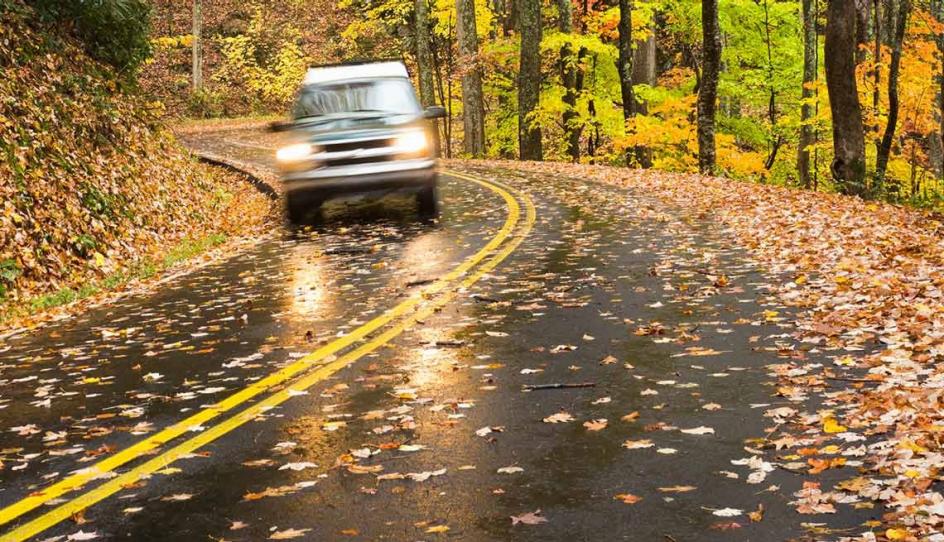This time of the year brings beautiful views of the leaves turning colors, fall festivals, and crisp temperatures. It also can bring a lot of driving hazards on the road. We want to remind you of some of those hazards, sun glare, wet leaves, fog and frost, just to name a few.
As the leaves begin to fall, wet leaves create a very slippery surface on the road, just like ice. Wet leaves can also obscure traffic lines and other pavement markings. You should slow down and use extra caution on leaf-covered roadways.
Fog and sun glare are other fall hazards for motorist. When driving in fog, you should use low beams because high beams create glare and reduces your visibility. Remember, when your wipers are on, state law requires that your headlights are on.
Sun glare can be the most dangerous during sunrise and sunset. At this time, we encounter morning and evening rush hours, which more drivers are on the road. The intense glare from the sun on the horizon can blind you. To prepare for the glare, always have sunglasses handy and keep your windshield clean inside and out.
Morning frost and icy spots on the road can cause problems because the overnight temperatures drop toward freezing. You should pay extra attention on bridges, overpasses and shaded areas on the road where icy spots can form. Also make sure you clear the frost from your windshield before traveling.
Fall Roadway Hazards Include Deer
This time of year brings an increase in deer activity, watch carefully for deer darting across and along the roadways.
Fall marks the deer’s breeding season, and deer pay less attention and become bolder as they move around more and travel greater distances seeking mates. Primarily n
- Slow down and use caution, particularly where deer crossing signs are posted and increase following distance between vehicles;
- Make young drivers aware of increased deer movement;
- Be especially watchful during morning and evening hours when wildlife is most active;
- Exercise caution when one deer crosses a roadway. Since deer often travel in small herds, one deer will usually be followed by others;
- Always wear your seat belt;
- Never drive impaired; and
- Turn on your headlights if your wipers are on — it’s the law.
